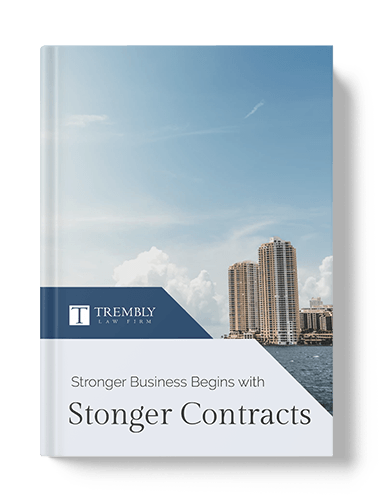The merger and acquisition process is a complex and multifaceted process that involves the buying, selling, and combining of two or more companies. Mergers and acquisitions (M&A) can take many forms, including a merger of equals, where two companies merge to form a new entity, or an acquisition, where one company acquires another. The process can be initiated by either the buyer or the seller, and can involve negotiations, due diligence, and financing.
M&A can be a strategic move for companies looking to expand their market share, increase profitability, or gain access to new technologies or products. However, the process can also be risky and costly, and requires careful planning and execution. The success of an M&A deal depends on a variety of factors, including the compatibility of the two companies, the financial health of the companies, and the ability of the companies to integrate their operations and cultures.
Overall, the merger and acquisition process is a complex and challenging undertaking that requires a deep understanding of the business, legal, and financial aspects of the transaction. Companies that are considering an M&A deal should seek the advice of experienced professionals and conduct thorough due diligence to ensure that the deal is in their best interests.
Understanding M&A Fundamentals
Mergers and acquisitions (M&A) are complex business transactions that involve the consolidation of two or more companies. The M&A process can be a strategic way for companies to achieve their growth objectives and gain a competitive edge in the market. Understanding the fundamentals of M&A is essential for any business owner or executive who is considering this type of transaction.
Types of Mergers and Acquisitions
There are several types of mergers and acquisitions, each with its own unique characteristics and implications. The most common types of M&A are:
- Horizontal merger: This type of merger involves two companies that operate in the same industry and compete with each other. Horizontal mergers are often driven by the desire to increase market share and gain a competitive advantage.
- Vertical merger: A vertical merger involves two companies that operate in different stages of the same supply chain. For example, a manufacturer might merge with a supplier of raw materials. Vertical mergers are often driven by the desire to reduce costs and improve efficiency.
- Conglomerate merger: A conglomerate merger involves two companies that operate in unrelated industries. Conglomerate mergers are often driven by the desire to diversify and reduce risk.
- Asset acquisition: In an asset acquisition, one company purchases the assets of another company. This type of transaction is often used when a company wants to acquire a specific asset or set of assets, such as intellectual property or real estate.
Key M&A Terminology
There are several key terms that are used in the M&A process. Some of the most important ones include:
- Synergies: Synergies are the benefits that result from the combination of two companies. These benefits can include cost savings, increased market share, and improved efficiency.
- Due diligence: Due diligence is the process of thoroughly researching and analyzing a company before entering into a transaction. This process includes reviewing financial statements, contracts, and other key documents.
- Letter of intent: A letter of intent is a non-binding agreement between two companies that outlines the terms of a proposed transaction.
Importance of Strategic Goals
One of the most important aspects of the M&A process is setting strategic goals. Companies need to have a clear understanding of what they hope to achieve through the transaction, whether it’s increased market share, diversification, or improved efficiency. By setting clear strategic goals, companies can ensure that the M&A process is aligned with their overall business objectives.
In conclusion, understanding the fundamentals of M&A is essential for any business owner or executive who is considering this type of transaction. By understanding the different types of mergers and acquisitions, key M&A terminology, and the importance of strategic goals, companies can make informed decisions about whether or not to pursue an M&A transaction.
Preparation and Planning
Before embarking on a merger or acquisition, it is crucial to have a solid plan in place. This includes setting clear objectives, identifying acquisition targets, and assembling the M&A team.
Setting Clear Objectives
The first step in the preparation and planning phase is to set clear objectives. This involves defining the company’s acquisition strategy and determining the M&A search criteria. The management team should be involved in this process to ensure that the objectives align with the company’s overall goals and vision for growth.
Identifying Acquisition Targets
Once the objectives are established, the next step is to identify potential acquisition targets. This involves conducting a thorough analysis of the market and industry to determine which companies would be the best fit. The corporate development team should be involved in this process to ensure that the targets align with the company’s strategic goals.
Assembling the M&A Team
The final step in the preparation and planning phase is to assemble the M&A team. This team should include individuals with experience in finance, legal, and operations. It is important to have a project manager who can oversee the entire process and ensure that all deadlines are met.
Overall, the preparation and planning phase is critical to the success of a merger or acquisition. By setting clear objectives, identifying acquisition targets, and assembling the right team, companies can ensure that they are well-prepared for the next phase of the process.
The M&A Transaction Process
The M&A transaction process is a complex and multi-step procedure that businesses undergo to merge with or acquire other companies. This process includes several stages, from initial contact and negotiation to finalizing the deal structure.
Initial Contact and Negotiation
The first step in the M&A process is the initial contact and negotiation phase. This involves identifying potential acquisition targets and initiating contact with them. The negotiation phase is where both parties discuss the terms of the deal and try to come to an agreement.
During this phase, the buyer will typically issue a letter of intent (LOI) to the seller. This document outlines the basic terms of the proposed deal and serves as a starting point for further negotiations. It is important to note that an LOI is not legally binding and does not guarantee that the deal will be completed.
Due Diligence
Once both parties have agreed on the basic terms of the deal, the due diligence phase begins. This is where the buyer conducts a thorough investigation of the seller’s business to ensure that there are no hidden risks or liabilities.
Due diligence includes a comprehensive review of the seller’s financial statements, legal and tax records, customer contracts, employee agreements, and other relevant documents. The goal is to identify any potential issues that could impact the value of the deal or pose a risk to the buyer.
Finalizing the Deal Structure
After completing due diligence, the parties can move on to finalizing the deal structure. This involves determining the final purchase price, payment terms, and legal structure of the transaction.
Valuation is a critical part of this process, as it helps both parties determine a fair price for the business. The buyer and seller will typically negotiate the purchase price based on the results of the due diligence process and other factors such as market conditions and industry trends.
The deal structure will also take into account tax implications and legal considerations. The buyer and seller will work with their respective legal and financial advisors to determine the best structure for the transaction, whether it be an asset purchase, stock purchase, or merger.
In conclusion, the M&A transaction process is a complex and multi-step procedure that requires careful planning, negotiation, and due diligence. By following these steps, both parties can ensure a successful and mutually beneficial transaction.
Financial Considerations
When it comes to mergers and acquisitions (M&A), there are several financial considerations that must be taken into account. This section will discuss some of the most important financial factors that companies should consider during the M&A process.
Valuation Methods
One of the most important financial considerations during an M&A deal is determining the value of the target company. There are several valuation methods that can be used, including discounted cash flow (DCF) analysis, comparable company analysis (CCA), and precedent transaction analysis (PTA). Each of these methods has its own strengths and weaknesses, and companies should consider using multiple methods to arrive at a more accurate valuation.
Financing the Acquisition
Another important financial consideration is how to finance the acquisition. There are several financing strategies that companies can use, including using cash, issuing equity, or a combination of both. Companies should carefully consider their financing strategy and ensure that they have enough capital to complete the acquisition and integrate the target company.
Tax Considerations
Tax considerations are also an important aspect of the M&A process. Companies should consider the tax implications of the acquisition, including the tax treatment of the purchase price, the tax implications of any financing used to complete the acquisition, and any potential tax benefits or liabilities associated with the target company.
Overall, financial considerations are a critical component of the M&A process. Companies should carefully consider their valuation methods, financing strategy, and tax implications to ensure a successful acquisition. By taking a confident and knowledgeable approach to these financial considerations, companies can increase their chances of success and create value for their shareholders.
Post-Merger Integration
Post-merger integration (PMI) is a crucial process that follows the closing of a merger or acquisition deal. It is the process of bringing together two separate entities and ensuring that they operate as one cohesive unit. The success of a merger or acquisition largely depends on how well the post-merger integration process is executed.
Integration Planning and Execution
Integration planning and execution is a critical phase of the post-merger integration process. It involves creating a detailed integration plan that outlines the steps required to integrate the two entities. The integration plan should cover all aspects of the integration process, including operations, finance, IT, human resources, and legal. The integration team should consist of experienced professionals who have the necessary skills and experience to manage the integration process effectively.
One of the key objectives of the integration planning phase is to identify potential synergies and cost savings that can be achieved through the integration process. The integration team should work closely with the management of both entities to identify areas where cost savings can be achieved without compromising the quality of service. The integration plan should also include a communication strategy to keep all stakeholders informed about the progress of the integration process.
The execution phase of the post-merger integration process involves implementing the integration plan. The integration team should ensure that all the steps outlined in the integration plan are executed on time and within budget. The team should also monitor the performance of the integrated entity to ensure that it is achieving the expected results.
Measuring Post-Merger Success
Measuring post-merger success is an important aspect of the post-merger integration process. It involves evaluating the performance of the integrated entity against the objectives set out in the integration plan. The integration team should use both quantitative and qualitative metrics to measure the success of the integration process.
Quantitative metrics such as revenue growth, cost savings, and profitability can provide a clear picture of the financial performance of the integrated entity. Qualitative metrics such as employee satisfaction, customer satisfaction, and brand reputation can provide insights into the non-financial aspects of the integration process.
In conclusion, post-merger integration is a complex process that requires careful planning and execution. The integration team should work closely with the management of both entities to ensure that the integration process is executed smoothly and effectively. Measuring post-merger success is crucial to determine whether the integration process has achieved the desired results.
Next Steps
To sum up, navigating the merger and acquisition process can be complex, but with the right guidance, it can lead to tremendous growth and opportunity for your business. A well-executed M&A strategy ensures that all aspects, from due diligence to integration, are handled smoothly and effectively.
At Trembly Law Firm, our experienced attorneys are here to support you every step of the way. If you’re considering a merger or acquisition, contact us today to schedule a consultation and let us help you achieve a successful transition and growth for your business.

















